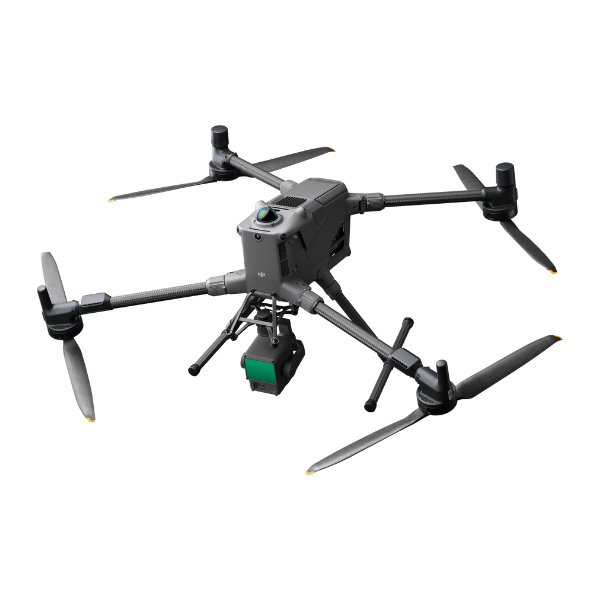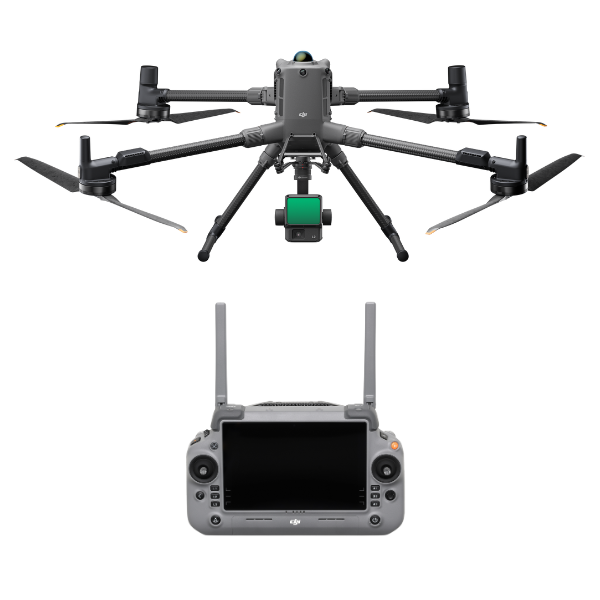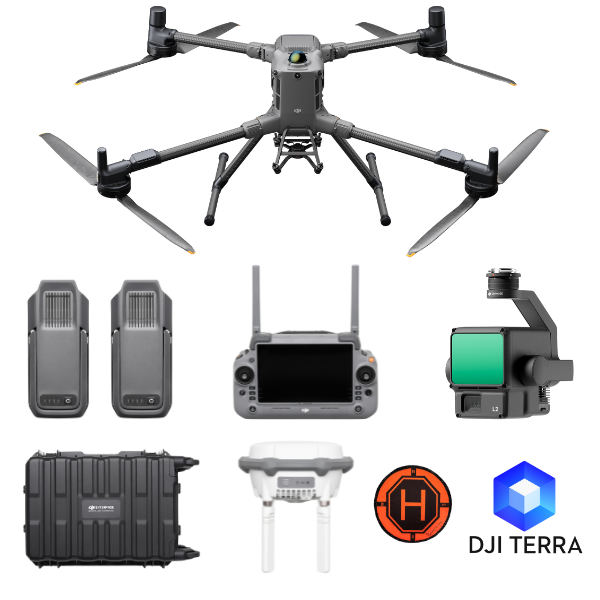











Professional Drone Package for Utility, Power Grid, and Infrastructure Inspection
The DJI Matrice 400 PowerLine Pro Inspector Kit is a purpose-built drone solution tailored for high-performance inspection and maintenance of electrical infrastructure such as transmission lines, substations, and power towers. Featuring the latest DJI Matrice 400 drone platform, this kit is designed for professionals who demand precision, extended endurance, and reliability in critical missions.
Equipped with industry-leading sensors like the Zenmuse L2 LiDAR and Zenmuse H30T thermal-visual camera, this package ensures you capture precise aerial data across long corridors with minimal downtime. Whether you're scanning high-voltage lines, inspecting transformers, or conducting thermal analysis of electrical assets, the PowerLine Pro Inspector Kit delivers a complete aerial intelligence system built for safety, accuracy, and productivity.
DJI Matrice 400 Drone
Zenmuse L2 LiDAR Payload
2x TB100 Intelligent Flight Batteries
D-RTK 3 Base Station with Tripod
DJI Terra Pro 1 year
2x WB37 Batteries (for remote controller)
Landing Pad
Battery Charging Station
The DJI Matrice 400 serves as the core of this inspection kit. Built for tough environments and demanding aerial applications, the M400 is engineered for maximum stability, performance, and payload integration.
Key Features:
Max Flight Time: Up to 59 minutes (forward flight), 53 minutes (hover)
Payload Capacity: Up to 6 kg for multi-sensor configurations
IP55 Rating: All-weather resistant (dust, rain, snow, extreme temperatures)
Transmission System: O4 Enterprise with up to 40 km range, real-time 1080p 60fps video
Obstacle Avoidance: 6-directional sensing, rotating LiDAR and mmWave radar
Precision RTK Support: Seamless integration with D-RTK 3 station
BVLOS Ready: Advanced comms and failsafe systems for beyond visual line of sight operations
The modular design, hot-swappable batteries, and enhanced stability make the Matrice 400 the ideal platform for long-range utility inspections in any condition.
The Zenmuse L2 brings powerful aerial LiDAR scanning into the powerline inspection workflow. Built for high-accuracy surveying and 3D corridor modeling, it enables the rapid collection of dense point cloud data while tracking long distances with precision.
Key Benefits:
High-Resolution LiDAR with frame-based design
4/3-inch CMOS RGB Camera for texture mapping and photogrammetry
Integrated IMU and GNSS for absolute position accuracy
Real-time 3D Visualization on DJI Pilot 2 app
Seamless DJI Terra Processing Compatibility
Operators can scan vast linear infrastructure corridors with fewer flight passes and reduced risk to crews. L2 allows professionals to identify sagging cables, vegetation encroachment, and structure warping more efficiently than ever.
For centimeter-level accuracy, the D-RTK 3 station is included. This high-precision GNSS solution ensures accurate positioning during flights and is critical for PPK/RTK workflows in power grid inspections.
Multi-constellation support (GPS, GLONASS, Galileo, BeiDou)
Rugged tripod for quick field deployment
Compatible with both real-time corrections and offline processing
2x TB100 Intelligent Batteries: 55.2 V high-performance Li-ion batteries with hot-swapping for uninterrupted operations.
2x WB37 Batteries: Powering the DJI RC Plus remote controller for extended ground control time.
DJI BS100 Charging Station: Charges multiple TB100 batteries simultaneously, optimizing time in the field.
1. Transmission Line Inspection
Scan kilometers of overhead power lines using L2 LiDAR to model line sag, measure tower spacing, and detect anomalies.
2. Substation Monitoring
Use the H30T thermal camera to monitor heat signatures on transformers, switchgear, and circuit breakers for early fault detection.
3. Infrastructure Mapping
Generate 3D maps of power corridors for digital twin modeling, asset documentation, and urban planning purposes.
4. Vegetation Management
LiDAR point clouds and optical zoom identify encroaching trees or structures that pose risks to powerline integrity.
5. Emergency Response
Post-storm assessment of transmission lines and utility damage with quick deployment and accurate documentation for rapid repairs.
Significantly reduce downtime and maintenance costs
Minimize risk by keeping human inspectors away from dangerous infrastructure
Enable faster decision-making with accurate real-time and post-flight data
Comply with industry inspection standards through automated, repeatable workflows
Improve operational efficiency and scalability across multiple sites and teams
Login or Registerto submit your questions to seller
No none asked to seller yet